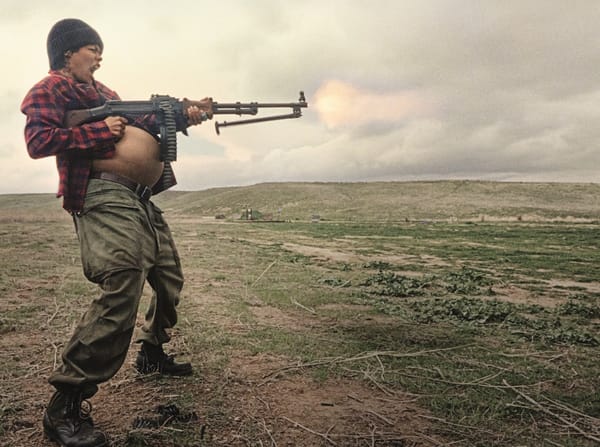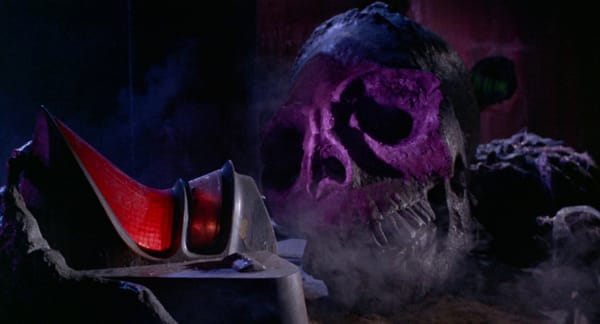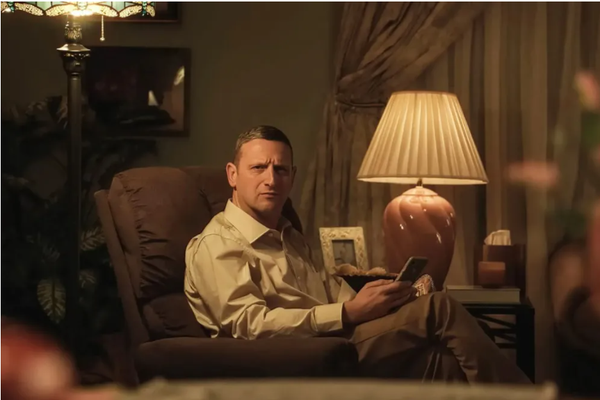The Gallipoli Myth (Part 1)
You do not, in fact, have to hand it to the Ottoman Empire

This is Part 1 of a pair of articles looking at the way narratives surrounding the Battle of Gallipoli are co-opted for nationalist purposes. This article is focused on Turkish nationalism. Next week, I will look at the way these narratives are used to downplay ANZAC war crimes.
“This is your land”
What’s the weirdest place you’ve encountered Turkish nationalism?
For me, it’s in the 2022 anthology film We Are Still Here. Featuring eight intertwined stories from the past and future about Indigenous peoples from New Zealand, Australia and the Pacific, it is, for the most part, a profound collection of stories about solidarity and resistance against colonialism. Then there’s The Uniform, directed by Miki Magasiva and Mario Gaoa, set during the Battle of Gallipoli. The broadly comedic short follows Samoan soldier Bernard (Villa Junior Lemanu) who ends up bonding with his Turkish counterpart on the other side of no-man’s land. Hijinks ensue, the two men end up switching uniforms and trenches and the film ends on a much more earnest note. Bernard takes a handful of dirt and hands it to a young Turkish man saying “This is your land.”
When this moment unfolded in cinemas my jaw was on the floor.

Here was a film about resistance against British imperialism and genocide, affirming the myths of another European imperialist, genocidal state. Even more shockingly, it was a film about Indigeneity using the language of Indigeneity to imply that the Ottomans were somehow Indigenous to Gallipoli. I haven’t been able to find any reviews that mentioned this moment (although I definitely wasn’t the only one in my screening who was uncomfortable). The closest I could find was Christopher Llewellyn Reed’s review in Hammer to Nail which notes “To be fair, it wasn’t only the British who wreaked havoc on the world as they seized more territory; other European nations joined in the genocidal fun, too.” One of those nations was the one that the British sent tens of thousands of soldiers to die facing off against at Gallipoli1.
I scoured the end credits to check whether the film had received funding from any state-affiliated bodies from Türkiye but there were none. It seems that the decision to depict the Ottoman Empire in this way was an organic decision by the filmmakers.
I single out We Are Still Here because of how this moment directly contradicts its themes. However, it is far from the only example. New Zealand has a habit treating the Ottoman Empire as either an honourable opponent or an innocent victim in World War I. In fact the Te Papa exhibition Gallipoli: The Scale of Our War explicitly uses the same language: “their land”.

Johnny’s Substack is a reader-supported publication. To receive new posts and support my work, consider becoming a free or paid subscriber.
Our gallant foe
The Ottoman Empire was founded in Anatolia by Turkish-speakers from Central Asia. When Ottoman armies conquered Gallipoli in 1354, the peninsula was under Byzantine control. Before that, it had variously been ruled by Venetian, Hunnic, Hellenic, Celtic, Athenian, Spartan, Persian and Roman powers. The first attested people to live in Gallipoli were Thracians, an ancient culture who spoke a now extinct Indo-European language.2
When the Ottoman Empire expanded into Eastern Europe in the late-Medieval period, it was viewed as an existential threat by the Christian powers who had been fighting Muslims in the Crusades and Reconquista. However, by the early 20th Century, the empire had receded and been integrated into the European state system. It was common for European powers to ally with Turkey and compete with them for territory around the Mediterranean3. Even as a Muslim power, they had more in common with other European empires than the Muslim peoples they ruled in the Middle East4. Using the language of Indigeneity to affirm the Turkish hold on Gallipoli would be like telling a French soldier that Algeria was his land.

Sympathetic depictions are particularly painful because they erase the fact that the Ottomans were just as genocidal as the colonial powers who fought with and against them in World War I. In 1913, the Ottoman government was overthrown by the Committee for Union and Progress (CUP) which was fuelled by a similar brand of ethnonationalism as its white supremacist and Zionist contemporaries. In 1915, the CUP initiated its violent campaign against Armenian minorities, known euphemistically as The Deportation Act. In Destiny Disrupted: A History of the World Through Islamic Eyes, Tamim Ansary describes what we now know as the Armenian genocide:
Outside of Turkey, however, few scholars doubt that in 1915 something much worse than ethnic cleansing took place, reprehensible as that alone would have been. The Deportation Act was the beginning of an organized attempt… to exterminate the Armenians, as a people—not just from Asia Minor or Turkish-designated areas but from the very Earth. Those who were being “relocated” were actually force-marched and brutalized to death; it was, in short, attempted genocide... The exact toll remains a matter of dispute but it exceeded a million.
Armenian Genocide Rememberence Day is recognised on 24 April, the day before ANZAC day. In 1915, the genocide was beginning at the exact same time as the ANZACs were landing on Gallipoli.
Johnnies, Mehmets and Atatürk
The list of countries that recognise the Armenian genocide is growing. Even Joe Biden, one of the 21st Century’s loudest pro-genocide voices, formally recognised it in 2021. To date, New Zealand does not recognise the Armenian Genocide, despite a significant push from activists and the Armenian diaspora.
In fact, the last century of commemorations has increasingly been marked by synchronisation between the historical memories of New Zealand and Turkey (now Türkiye). An official narrative is formed, based on a premise that I agree with: a callous and incompetent British Empire sent huge numbers of soldiers from its colonies to die fighting the Ottomans at Gallipoli. However, the narrative tends to go on to frame the Ottomans as a noble opponent who has been jolly good about forgiving us for the whole invasion thing.
One of the most useful figures in securing this narrative is the guy who overthrew the CUP after the war: Mustafa Kemal Atatürk. His new brand of nationalism prioritised Turkish language and identity over Islam while continuing to oppress the state’s ethnic minorities (even if it was less explicitly genocidal than the CUP). Atatürk also fought against the ANZACs at Gallipoli, a few years prior to taking power. This last point is the key to explaining why New Zealand loves Atatürk so much.

Atatürk is the quintessential example of the long tradition of Kiwis asking their overseas friends “so what did you think of New Zealand?” If a historical figure didn’t spend enough time praising us, one can always invent some nice words. The man’s famous “Johnnies and Mehmets” quote that adorns the Turkish memorial at Pukeahu in Wellington was likely completely fabricated. In his article about the quote, Australian writer Paul Daley cites a number of reasons for its enduring popularity. The retroactive invention of fake camaraderie suits the ANZACs because we were an invasion force5. It suits the Turks because Sukru Kaya (Atatürk’s interior minister who helped popularise the fake quote) was involved in the Armenian genocide. And it suits both sides because of “the close bilateral relationship between old foes and, not least, a symbol of the commemorative cultural (and tourism) value of Anzac.”

There are Atatürk memorials across New Zealand and Australia (including one in Breaker Bay) but it is unclear whether he gave us much thought. He may have been too busy ‘modernising’ Turkey. In Lost Islamic History, Firas Alkhateeb describes what this modernisation looked like:
In Atatürk’s West-focused Turkey, there was no room for the relationships with others based on Islam that characterized the Ottoman Empire. Furthermore, other ethnic groups were not welcome. Greeks, Arabs, Kurds and Armenians within Turkey’s borders were all oppressed by the new Turkish government, which sought to base its power on Turkish identity alone. Non-Turkish ethnic groups threatened this and were not afforded the same freedoms as their Turkish neighbours.




It is clear that ANZAC celebrations are useful to Türkiye for the role they play in distracting from many of the less-savoury aspects of its history. The current Turkish nationalist moment, under Recep Tayyip Erdoğan, has overlapped with the centenary celebrations of Gallipoli (and the Armenian genocide). I have it on good authority that New Zealand government officials who helped with the commemorations received material from their Turkish counterparts calling into dispute “the Armenian question” while protests have continued to be supressed in the years since.


For the last century of evolving Turkish nationalism, from Atatürk and Kaya all the way to Erdoğan, it is clear how Türkiye benefits from our official narrative about the Battle of Gallipoli. It frames the Turks as noble foes (or as colonised peoples rather than colonisers in the case of The Uniform), it gives them legitimacy among the anglosphere and it distracts from their atrocities. Next week will look at how the ANZACs, and New Zealand specifically, benefits from this narrative.
The composition of the ANZACs who served at Gallipoli included, according to the best figures I could find, approximately 70 Indigenous Australians, 461 Māori and an uncertain number of Pasifika. Initially a German colony, Western Samoa was immediately captured by New Zealand when war broke out (the start of New Zealand’s shameful colonial occupation of Samoa). Since it had been governed by both sides of the Great War in the prior two years, it is understandable that The Uniform should have a Samoan protagonist; it’s hard to imagine someone who would be less interested in the outcome of Gallipoli. My main gripe is the way it uses this concept to validate Turkish narratives. ↩
I mention this history not to treat any power that has ruled Gallipoli as its rightful owner but to illustrate how inappropriate it is to apply terms coined for colonised peoples to European powers. For this type of logic taken to its logical conclusion, see the Goethe Institut’s land acknowledgement of “the original Germanic and Slavic owners of the land” or Zionists using the language of Indigeneity to justify their colonisation of Palestine. ↩
Especially after the Reformation when Christian Europe became a lot more divided down religious lines. ↩
I will discuss some of these peoples in Part 2. ↩
And for reasons I will cover in Part 2. ↩



